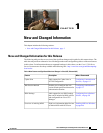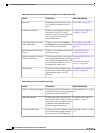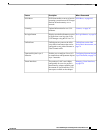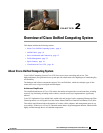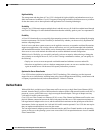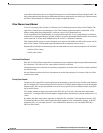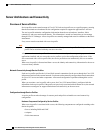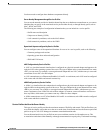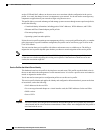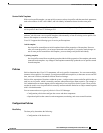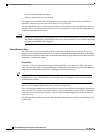
High Availability
The management and data plane of Cisco UCS is designed for high availability and redundant access layer
fabric interconnects. In addition, Cisco UCS supports existing high availability and disaster recovery solutions
for the data center, such as data replication and application-level clustering technologies.
Scalability
A single Cisco UCS domain supports multiple chassis and their servers, all of which are administered through
one Cisco UCS Manager. For more detailed information about the scalability, speak to your Cisco representative.
Flexibility
A Cisco UCS domain allows you to quickly align computing resources in the data center with rapidly changing
business requirements. This built-in flexibility is determined by whether you choose to fully implement the
stateless computing feature.
Pools of servers and other system resources can be applied as necessary to respond to workload fluctuations,
support new applications, scale existing software and business services, and accommodate both scheduled
and unscheduled downtime. Server identity can be abstracted into a mobile service profile that can be moved
from server to server with minimal downtime and no need for additional network configuration.
With this level of flexibility, you can quickly and easily scale server capacity without having to change the
server identity or reconfigure the server, LAN, or SAN. During a maintenance window, you can quickly do
the following:
• Deploy new servers to meet unexpected workload demand and rebalance resources and traffic.
• Shut down an application, such as a database management system, on one server and then boot it up
again on another server with increased I/O capacity and memory resources.
Optimized for Server Virtualization
Cisco UCS has been optimized to implement VM-FEX technology. This technology provides improved
support for server virtualization, including better policy-based configuration and security, conformance with
a company's operational model, and accommodation for VMware's VMotion.
Unified Fabric
With unified fabric, multiple types of data center traffic can run over a single Data Center Ethernet (DCE)
network. Instead of having a series of different host bus adapters (HBAs) and network interface cards (NICs)
present in a server, unified fabric uses a single converged network adapter. This type of adapter can carry
LAN and SAN traffic on the same cable.
Cisco UCS uses Fibre Channel over Ethernet (FCoE) to carry Fibre Channel and Ethernet traffic on the same
physical Ethernet connection between the fabric interconnect and the server. This connection terminates at a
converged network adapter on the server, and the unified fabric terminates on the uplink ports of the fabric
interconnect. On the core network, the LAN and SAN traffic remains separated. Cisco UCS does not require
that you implement unified fabric across the data center.
The converged network adapter presents an Ethernet interface and Fibre Channel interface to the operating
system. At the server, the operating system is not aware of the FCoE encapsulation because it sees a standard
Fibre Channel HBA.
Cisco UCS Manager GUI Configuration Guide, Release 2.0
10 OL-25712-04
Unified Fabric




